The history of solar energy dates back to hundreds of years. Romans have been using it to heat water in bathhouses around first century itself. Since that period scientist have been constantly trying to improve the ways to use solar power and for various other purposes.
Let us have a look at the history of evolving solar cell and see how it improved over the many years.
The 1700’s

1767 : Swiss scientist Horace de Saussure first recorded a solar device which was a collector in 1767. He experimented with trapping solar heat using boxes made of glass, and later refined his design to include outer shells of black wood coated with insulation. Although it was an experiment the designs were also later used as the first solar ovens.
The 1800’s

1816 : Robert Stirling, the inventor of Stirling engine which can generate energy by capturing and converting thermal energy to produce electricity in 1816.
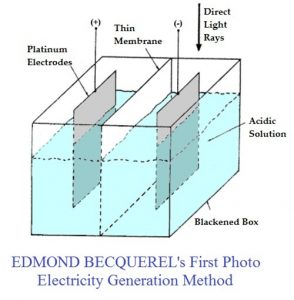
1839 : Edmond Becquerel, the French scientist who discovered the photovoltaic effect the operating principle of the solar cell while experimenting with an electrolytic cell. He observed electricity generation increased when exposed to light.
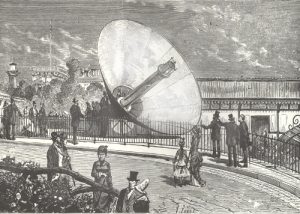
1860 : French Mathematician, August Mouchet is the earliest inventor of the idea for solar-powered steam engines. He and his assistant, Abel Pifre, constructed the first solar powered engines and used them for a variety of applications which became the predecessors of modern parabolic dish collectors.
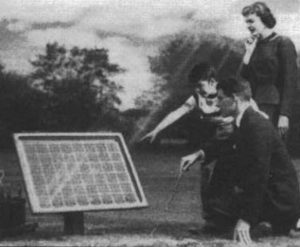
1876 : It was discovered that selenium can produce electricity when exposed to light by William Grylls Adams and Richard Evans Day. It proved that it was possible to convert solar energy directly into electricity without any moving parts or heat.
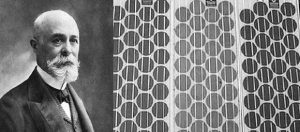
1883 : An American inventor named Charles Fritts, described the first solar cells made from selenium wafers. The world’s first rooftop solar array, using Fritts’ selenium cells which was installed on a New York City rooftop.
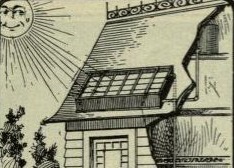
1891 : Clarence Kemp, a Baltimore inventor patented the first commercial solar water heater enclosed in a tank in a wooden box, thus creating the first ‘batch water heater’ as they are known today.
The 1900s
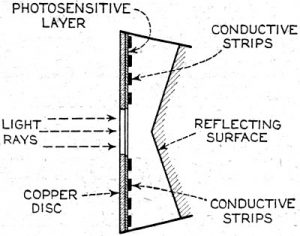
1904 : Wilhelm Hallwachs, a German Physicist discovered that a combination of copper and cuprous oxide forms photosensitive.
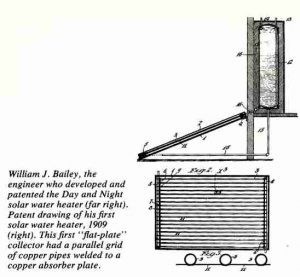
1908 : William J. Bailey of the Carnegie Steel Company invents a solar collector with copper coils and an insulated box, a design which is roughly the same today.
1918 : Jan Czochralski developed a way to grow single-crystal silicon. This greatly increases the efficiency of silicon-based cells.

1921 : Albert Einstein wins the Nobel Prize for his theories (1904 research and technical paper) explaining the photoelectric effect.
1932 : The photovoltaic effect in cadmium sulfide (CdS) was discovered by Audobert and Stora in 1932.
Mid-1950s
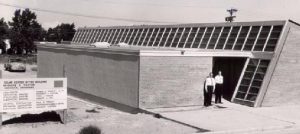
1950 : Architect Frank Bridgers designed the world’s first commercial office building using solar water heating and passive design. It is now in the National Historic Register named as The Bridgers-Paxton Building, world’s first solar heated office building which operating till date since its construction.
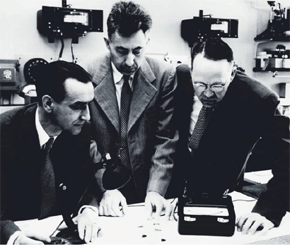
1954 : Daryl Chapin, Calvin Fuller, and Gerald Pearson develop the silicon photovoltaic (PV) cell at Bell Labs. This is the first solar cell which is capable of converting enough of the sun’s energy into power to run everyday electrical equipment. Hence, took the birth of Photovoltaic technology in the United States.
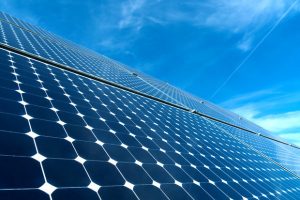
1955 : The selling of commercial licenses for silicon photovoltaic (PV) technologies began by Western Electric. Previous products included PV-powered dollar bill changers and devices that decoded computer punch cards and tape.
1956 : Paving the way for the solar-power standard in space, William Cherry, U.S. Signal Corps Laboratories, approaches Paul Rappaport and Joseph Loferski in RCA Labs’ about developing photovoltaic cells for proposed orbital satellites.
1957 : Hoffman Electronics achieves 8% efficiency in their photovoltaic cells.
1958 : T. Mandelkorn, U.S. Signal Corps Laboratories, fabricates n-on-p silicon photovoltaic cells. These cells are critically important for use in space as they’re resistant to the degrading effects of radiation. Vanguard I space satellite was launched using 0.1W, 100 cm² solar panel.
1960 : Hoffman Electronics created 14% efficient photovoltaic cells.
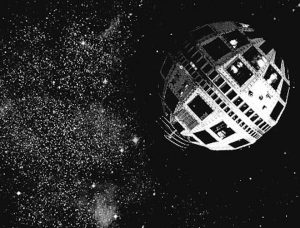
1962 : The Telstar telecommunications satellite was launched by Bell Telephone Laboratories.
1963 : Sharp Corporation succeeds in producing practical silicon photovoltaic modules and Japan installs world’s largest array at that time, 242-watt photovoltaic array on a lighthouse.
1965 : The idea of the satellite solar power station was initiated by Peter Glaser.
1969 : The Odeillo solar furnace, located in Odeillo, France was constructed. This featured an 8-story parabolic mirror.
1970s
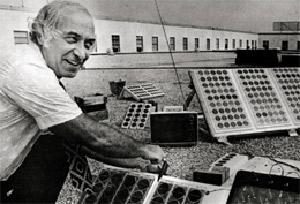
1970 : With the help from Exxon Corporation, Dr. Elliot Berman designed a cheaper solar cell which was available at $20 a watt. Solar cells begin to power navigation warning lights and horns on many offshore gas and oil rigs, lighthouses, railroad crossings and domestic solar applications began to be viewed as sensible applications in remote locations where grid-tied utilities could not exist affordably.
1972 : The French install a cadmium sulfide (CdS) photovoltaic system to operate an educational television at a village school in Niger. The Institute of Energy Conversion was established at the University of Delaware to perform research and development on thin-film photovoltaic (PV) and solar thermal systems, later on it became the world’s first laboratory dedicated to PV research and development.
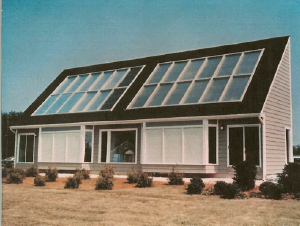
1973 : The University of Delaware builds ‘Solar One,’ one of the world’s first photovoltaic (PV) powered residences. The system is a PV/thermal hybrid. In addition to electricity, the arrays acted as flat-plate thermal collectors, with fans blowing the warm air from over the array to phase-change heat-storage bins.
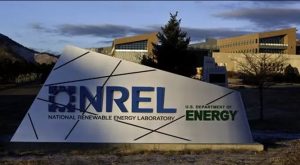
1977 : The Solar Energy Research Institute (National Renewable Energy Laboratory) was launched by U.S. Department of Energy, a federal facility dedicated to harnessing power from the sun.
1978 : NASA installs a solar power system on the Papago Indian Reservation located in southern Arizona-the world’s first village PV system to provide for water pumping and residential electricity in 15 homes until 1983, when grid power reached the village.
1980 : ARCO Solar becomes the first company to produce more than 1 megawatt of photovoltaic modules in one year.
1980 : The first thin-film solar cell was produced at the University of Delaware, which exceeds 10% efficiency using copper sulfide/cadmium sulfide.
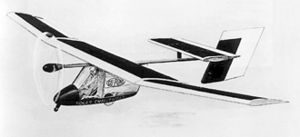
1981 : Paul MacCready builds the first solar-powered aircraft, which had over 16,000 solar cells mounted on its wings, producing 3,000 watts of power.
1982 :
- The first, photovoltaic megawatt-scale power station goes on-line in Hisperia, California consisting of 1-megawatt capacity system, developed by ARCO Solar.
- Australian Hans Tholstrup, the founder of the World Solar Challenge in Australia drives the first solar-powered car almost 2,800 miles between Sydney and Perth in 20 days.
- The U.S. Department of Energy, along with an industry consortium, began operating Solar One, a 10-megawatt central-receiver demonstration project.
- Volkswagen of Germany begins testing photovoltaic arrays mounted on the roofs of Dasher station wagons; generating 160 watts for the ignition system.
- The production of photovoltaic exceeds 9.3 megawatts Worldwide.
1983 : ARCO Solar completes a 6-megawatt photovoltaic substation in central California which supplies the Pacific Gas & Electric Company’s utility grid with enough power for over 2,000 homes.
1983 : Solar Design Associates completes a stand-alone, 4-kilowatt powered home in the Hudson River Valley.
Worldwide photovoltaic production exceeds 21.3 megawatts, with sales of more than $250 million.
1984 : The Sacramento Municipal Utility District commissions its first 1-megawatt photovoltaic electricity generating facility.
1985 : The University of South Wales breaks the 20% efficiency barrier for silicon solar cells under 1-sun conditions.
1986 : The world’s largest solar thermal facility was commissioned in Kramer Junction, California. The solar field contained rows of mirrors that concentrated the sun’s energy onto a system of pipes circulating a heat
transfer fluid which was used to produce steam connected to a conventional turbine to generate electricity.
1992 :
- The University of South Florida develops a 15.9% efficient thin-film photovoltaic cell made of cadmium telluride, breaking the 15% barrier for the first time for this technology.
- A 7.5-kilowatt prototype dish system becomes operational using an advanced stretched-membrane concentrator.
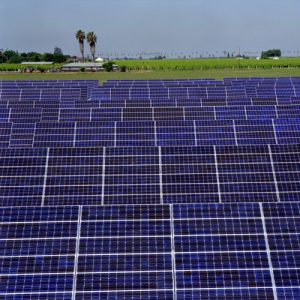
1993 : Pacific Gas & Electric completes installation of the first grid-supported photovoltaic system in Kerman, California. The 500-kilowatt system was the first distributed power effort.
1994 :
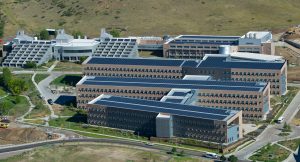
- The National Renewable Energy Laboratory (NERL) completes construction of its Solar Energy Research Facility. They develop a GaInP/GaAs two-terminal concentrator cell which becomes the first solar cell to exceed 30% conversion efficiency.
- First solar dish generator using a free-piston Stirling engine is tied to a utility grid.
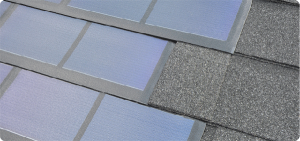
1998 : Subhendu Guha, a noted scientist led the invention of flexible solar shingles, a roofing material and state-of-the-art technology for converting sunlight to electricity. This is used in integrated solar technology which allows homeowners to install low-profile panels.

1999 : 4 Times Square, the tallest skyscraper built in the 1990s in New York City. incorporates more energy-efficient building techniques than any other commercial skyscraper. It includes building-integrated photovoltaic (BIPV) panels on the 37th through 43rd floors on the south and west-facing facades that produce a portion of the buildings power.
World photovoltaic power breaks 1000 megawatts.
The 2000s
2000 :
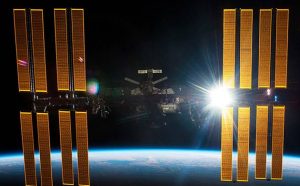
- Astronauts begin installing solar panels at the International Space Station, on what will be the largest solar power array deployed in space. Each wing of the array consists of 32,800 solar cells.
- Sandia National Laboratories develops a new inverter for solar electric systems that will increase the safety of the systems during a power outage. Inverters convert the direct current (DC) electrical output from solar systems into alternating current (AC), which is the standard current for household wiring and for the power lines that supply electricity to homes.
- Two new thin-film solar modules, developed by BP Solarex, break previous performance records. The company’s 0.5-square-meter module achieves 10.8 % conversion efficiency-the highest in the world for thin-film modules of its kind. And its 0.9-square-meter module achieved 10.6% conversion efficiency and a power output of 91.5 watts – the highest power output for any thin-film module in the world.
- A family in Morrison, Colorado, installs a 12-kilowatt solar electric system on its home-the largest residential installation in the United States to be registered with the U.S. Department of Energy’s Million Solar Roofs program.
2001 :
- Home Depot begins selling residential solar power systems in three of its stores in San Diego, California. A year later it expands sales to include 61 stores nationwide.
- The world’s largest hybrid system goes on-line in Hawaii. This system combines the power from both wind and solar energy.
- Powerlight Corporation installs the largest rooftop solar power system in the United States-a 1.18 megawatt system-at the Santa Rita Jail in Dublin, California.
2002 :

- A 38.7-kilowatt White Bluffs Solar Station (the largest solar power facility in the Northwest) goes on-line in Richland, Washington.
- ATS Automation Tooling Systems Inc. in Canada starts to commercialize a method of producing solar cells, called Spheral Solar technology. However this technology dropped production in the early 1990s, pioneered by Texas Instruments.
2004 : Some photo electro-chemical cells simply produce electrical energy, while others produce hydrogen in a process similar to the electrolysis of water. The latter form is currently being studied as a potential way to convert solar energy into a portable, transportable form (hydrogen).
2006 :
- Polysilicon use in photovoltaics exceeds all other polysilicon use for the first time.
- California Public Utilities Commission approved the California Solar Initiative (CSI), a comprehensive $2.8 billion program that provides incentives toward solar development over 11 years.
- New World Record Achieved in Solar Cell Technology – New Solar Cell Breaks the “40 Percent Efficient” Sunlight-to-Electricity Barrier
2007 :

- Construction of Nellis Solar Power Plant, a 15 MW PPA installation.
- The Vatican started installing solar panels on some buildings, in “a comprehensive energy project that will pay for itself in a few years” in order to conserve earth’s resources.
- Google solar panel project begins its operation.
- University of Delaware claims to achieve new world record in Solar Cell Technology without independent confirmation – 42.8% efficiency.
- Nanosolar ships the first commercial printed CIGS, claiming that they will eventually ship for less than $1/Watt.
2008 : Scientists at the U.S. Department of Energy’s National Renewable Energy Laboratory (NREL) have set a world record with a photovoltaic device that converts 40.8 percent of the light that hits it into electricity. The inverted metamorphic triple-junction solar cell was designed, fabricated and independently measured at NREL.
2010 :
- BP announces the closing of their photovoltaic plant in Maryland, moving all of their manufacturing work to China.
- President Barack Obama orders installation of additional solar panels and a solar hot water heater at the White House.
2011
- Fast-growing factories in China drive the manufacturing costs down to about $1.25 per watt for silicon photovoltaic modules.
As the technologies keep improving day by day and the young & old minds keep innovating new, creative techniques to encourage the use of solar energy which will give a positive impact on the environment, the world will see many new inventions in this field.

